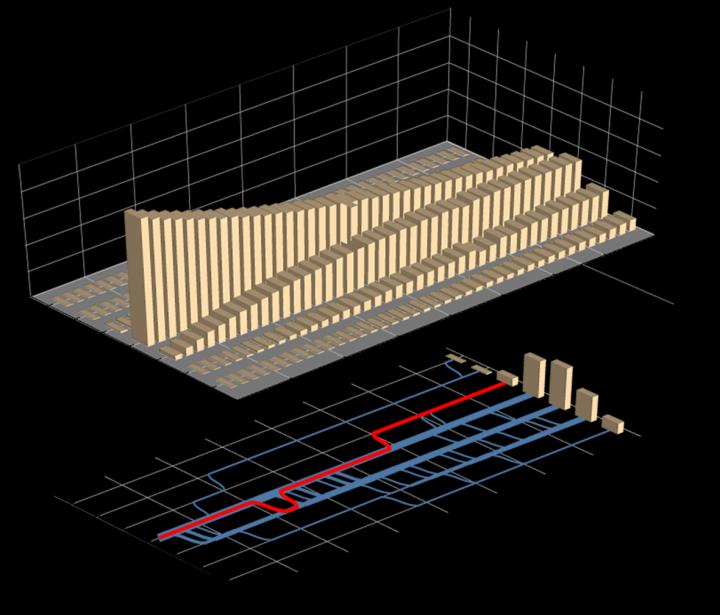A new methodology for an abstract and universal description of the fidelity of quantum circuits

Credit: Ubbelohde
Manipulating individual electrons with the goal of employing quantum effects offers new possibilities and greater precision in electronics. However, these single-electron circuits are governed by the laws of quantum mechanics, meaning that deviations from error-free operation still occur – albeit (in the best possible scenario) only very rarely. Thus, insights into both the physical origin the and metrological aspects of this fundamental uncertainty are crucial for the further development of quantum circuitry. To this end, scientists from PTB and the University of Latvia have collaborated to develop a statistical testing methodology. Their results have been published in the journal Nature Communications.
Single-electron circuits are already used as electric-current quantum standards and in quantum-computer prototypes. In these miniaturized quantum circuits, interactions and noise impede the investigation of the fundamental uncertainties and measuring them is a challenge, even for the metrological precision of the measurement apparatus.
In the field of quantum computers, a testing procedure also referred to as a “benchmark” is frequently used in which the operating principle and fidelity of the entire circuit are evaluated via the accumulation of errors following a sequence of operations. Based on this principle, researchers from PTB and the University of Latvia have now developed a benchmark for single-electron circuits. Here, the circuit’s fidelity is described by the random steps of an error signal recorded by an integrated sensor while the circuit repeatedly executes an operation. The statistical analysis of this “random walk” can be used to identify the rare but unavoidable errors when individual quantum particles are manipulated.
By means of this “random-walk benchmark”, the transfer of individual electrons was investigated in a circuit consisting of single-electron pumps developed at PTB as primary standards for realizing the ampere, an SI base unit. In this experiment, sensitive detectors record the error signal with single-electron resolution. The statistical analysis made possible by counting individual particles not only shows fundamental limitations of the circuit’s fidelity induced by external noise and temporal correlations but also provides a robust measure of assessing errors in applied quantum metrology.
The methodology developed within the scope of this work provides a rigorous mathematical foundation for validating quantum standards of electrical quantities and opens new paths for the development of integrated complex quantum systems.
###
Original scientific publication
D. Reifert, M. Kokainis, A. Ambainis et al.: A random-walk benchmark for single-electron circuits. Nat Commun 12, 285 (2021), https:/
Media Contact
Dr. Niels Ubbelohde
[email protected]
Original Source
https:/
Related Journal Article
http://dx.




